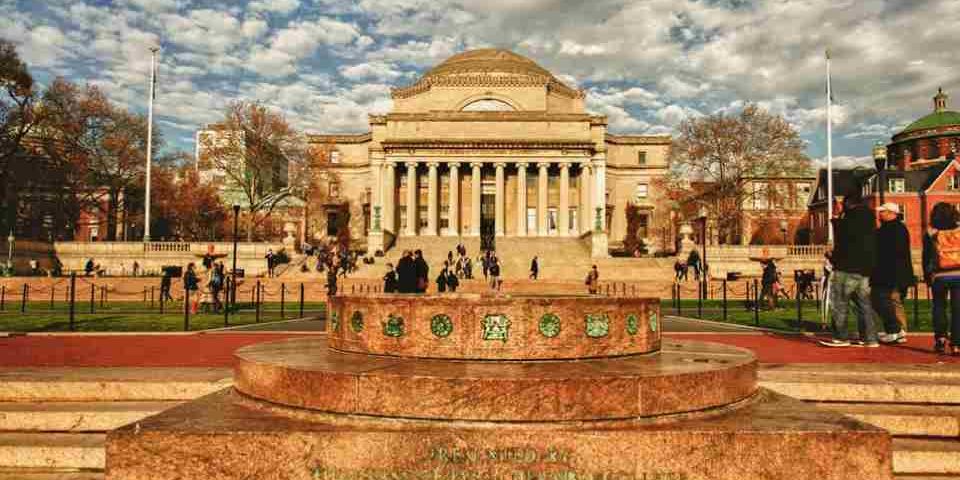The U.S. News Short List, separate from our overall rankings, is a regular series that magnifies individual data points in hopes of providing students and parents a way to find which undergraduate or graduate programs excel or have room to grow in specific areas. Be sure to explore The Short List: College, The Short List: Grad School and The Short List: Online Programs to find data that matter to you in your college or grad school search.
- 如有疑问,请联系电邮
- contact@eetcgroup.com
USNEWS:13所最难录取的大学本科

菲利普斯埃克赛特中学(Phillips Exeter Academy, Exeter, NH)
2018年12月3日
芝加哥大学(University of Chicago, Chicago, IL )
2018年12月4日By Ilana Kowarski
尽管最新的2018年的美国大学本科的录取率还没有统计完全,但2017年统计结果仍然值得借鉴。作为美国最难录取的13所美国大学本科,它们的录取率全部在10%以下。所以在申请时一定要做好心理准备,毕竟录取就象是中彩票一样。另外,这个美国国内大学排名,更多的排名影响因素是本科教育,当然它在衡量因子里也加入了研究生教育;但本科教育仍然占据较大的比重。如果要衡量美国研究生教育的综合实力,还是参考其全球大学排行榜;将其中的非美国大学去除后,就是美国国内大学综合科研教学实力排行榜!
Applicants to the nation’s most selective colleges face a formidable challenge. These college hopefuls must distinguish themselves among thousands of other bright, high-achieving students, so even sterling academic credentials may not be sufficient for them to get into their dream schools.
But students who are anxious about their admissions prospects may find it reassuring to know that a majority of colleges are not exclusive schools. In fact, at more than 1,000 of the 1,268 ranked undergraduate institutions that provided fall 2017 acceptance rate statistics to U.S. News in an annual survey, a majority of applicants were admitted. The average acceptance rate among all ranked schools that participated in the U.S. News Best Colleges survey was 66 percent.
However, there is no sugarcoating the fact that getting into top colleges can be incredibly difficult. At each of the 13 schools with the lowest acceptance rates in fall 2017, fewer than 1 in 10 applicants were admitted. The average acceptance rate among these highly selective schools was only 7 percent.
Two institutions on the list are National Liberal Arts Colleges, schools that emphasize undergraduate education and award at least half of their degrees in liberal arts disciplines. The remaining schools are National Universities, research-focused institutions that offer a variety of undergraduate majors plus an array of master’s and doctoral degrees.
Among these 13 schools, eight are located on the East Coast, three on the West Coast and two in the Midwest.
Admissions experts say that applicants should understand that highly competitive schools scrutinize every portion of the college application, including not only test scores and grades but also admissions essays and recommendation letters. Experts also suggest that applicants with lofty ambitions consider applying to both highly ranked universities and liberal arts colleges, since the chances of getting into any particular school of this caliber is very small.
Below is a list of the 13 colleges where it was most difficult to gain acceptance in fall 2017. Unranked schools, which did not meet certain criteria required by U.S. News to be numerically ranked, were not considered for this report.
| School (state) | Fall 2017 acceptance rate | U.S. News rank and category |
|---|---|---|
| Harvard University (MA) | 5% | 2, National Universities |
| Stanford University (CA) | 5% | 7, National Universities |
| Columbia University (NY) | 6% | 3 (tie), National Universities |
| Princeton University (NJ) | 6% | 1, National Universities |
| Massachusetts Institute of Technology | 7% | 3 (tie), National Universities |
| Yale University (CT) | 7% | 3 (tie), National Universities |
| California Institute of Technology | 8% | 12 (tie), National Universities |
| Pomona College (CA) | 8% | 5 (tie), National Liberal Arts Colleges |
| United States Naval Academy (MD) | 8% | 22 (tie), National Liberal Arts Colleges |
| Brown University (RI) | 9% | 14 (tie), National Universities |
| Northwestern University (IL) | 9% | 10 (tie), National Universities |
| University of Chicago | 9% | 3 (tie), National Universities |
| University of Pennsylvania | 9% | 8 (tie), National Universities |
Don’t see your school in the top 13? Access the U.S. News College Compass to find acceptance rates, complete rankings and much more. Sign up for the U.S. News Extra Help: College Admissions free email newsletter to receive expert advice twice a month.
U.S. News surveyed more than 1,800 colleges and universities for our 2018 survey of undergraduate programs. Schools self-reported myriad data regarding their academic programs and the makeup of their student body, among other areas, making U.S. News’ data the most accurate and detailed collection of college facts and figures of its kind. While U.S. News uses much of this survey data to rank schools for our annual Best Colleges rankings, the data can also be useful when examined on a smaller scale. U.S. News will now produce lists of data, separate from the overall rankings, meant to provide students and parents a means to find which schools excel, or have room to grow, in specific areas that are important to them. While the data come from the schools themselves, these lists are not related to, and have no influence over, U.S. News’ rankings of Best Colleges, Best Graduate Schools or Best Online Programs. The acceptance rate data above are correct as of Nov. 27, 2018.




